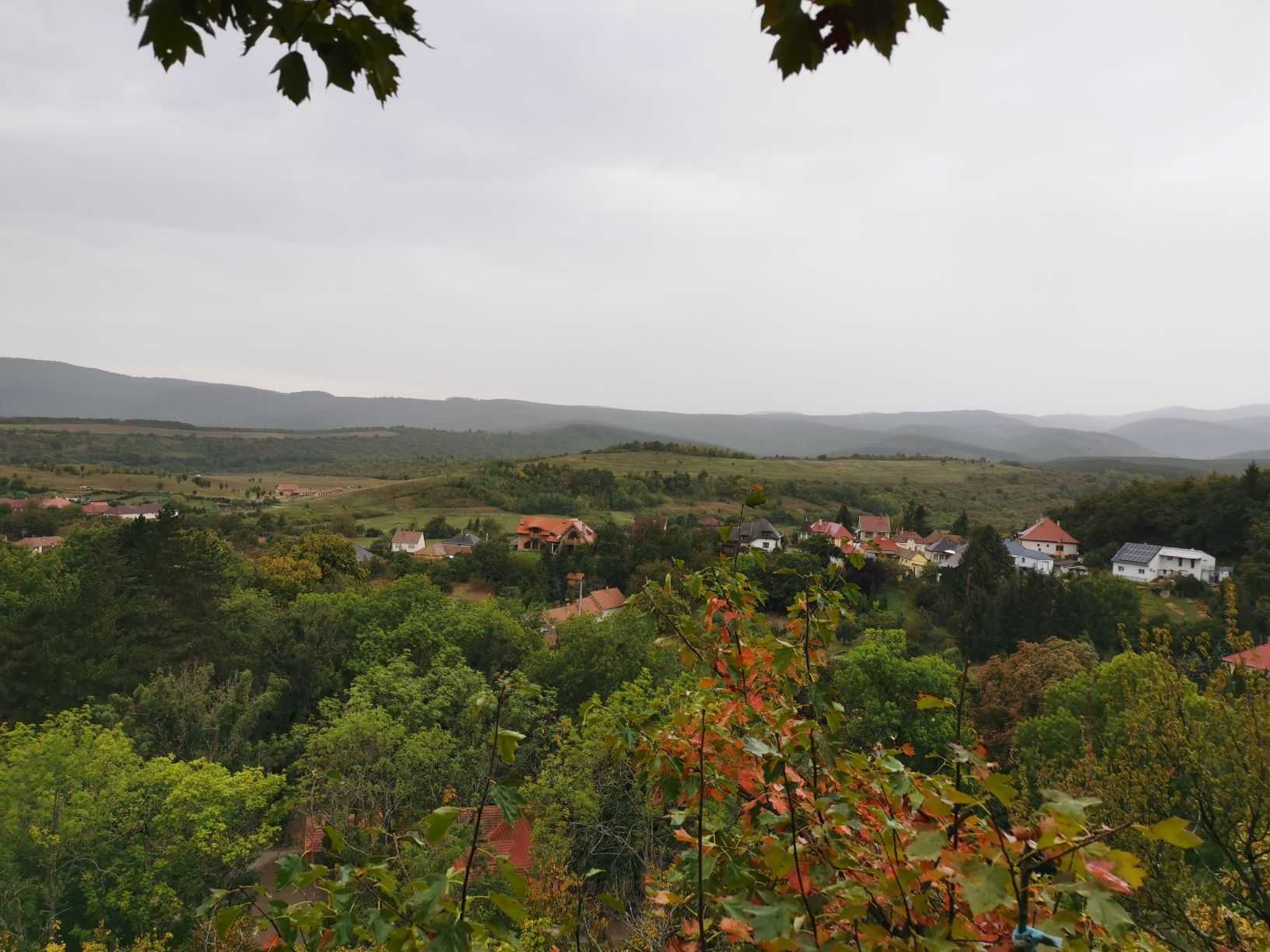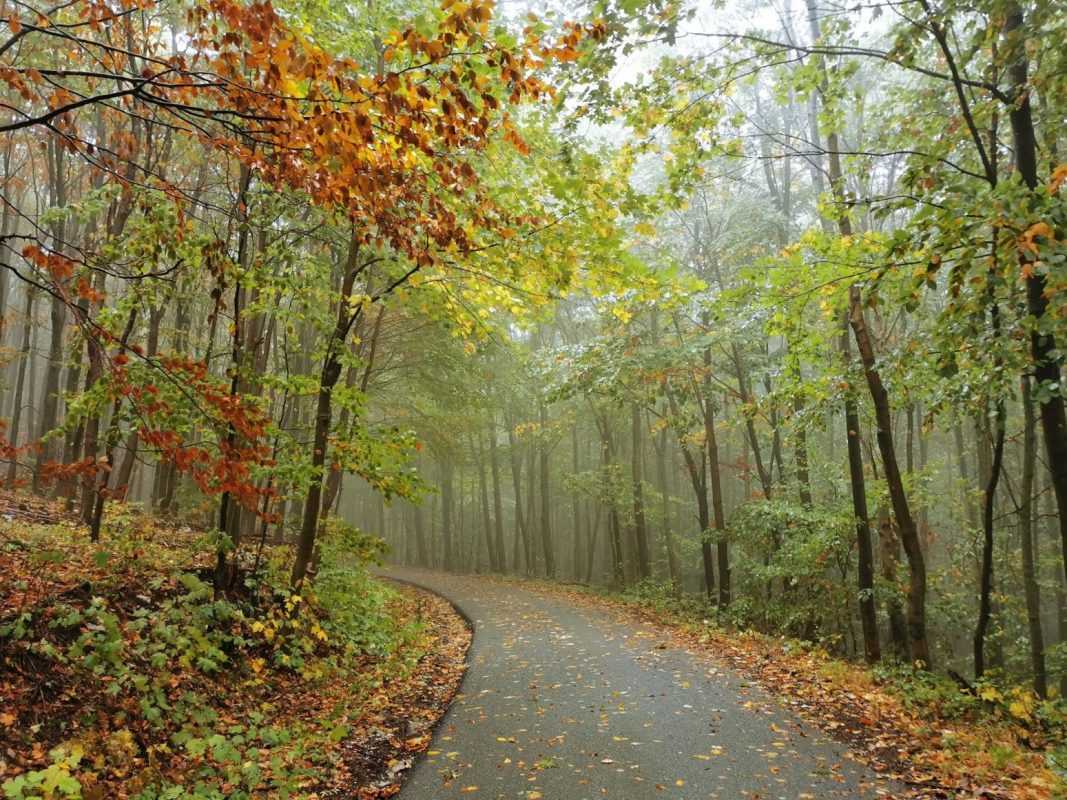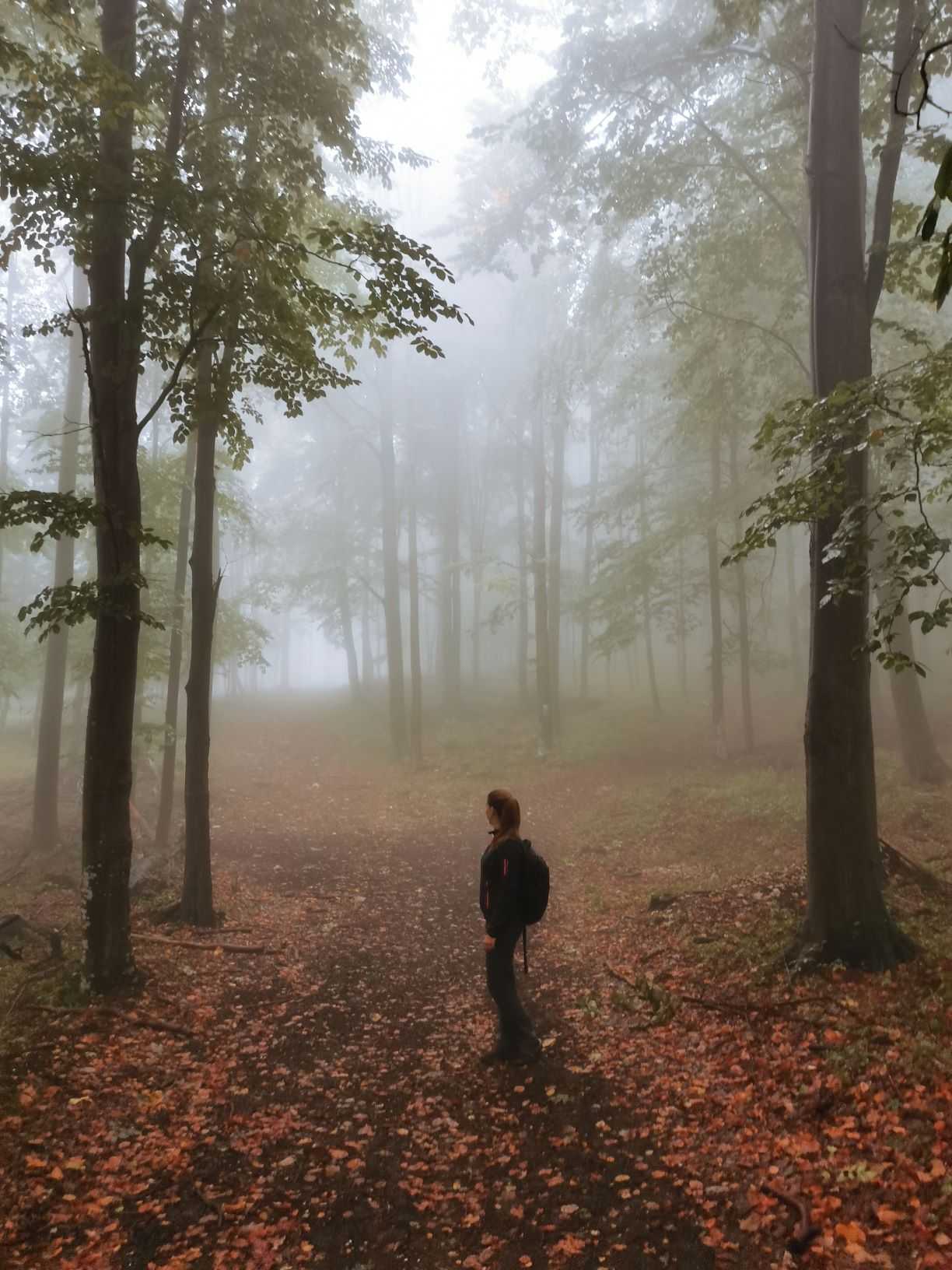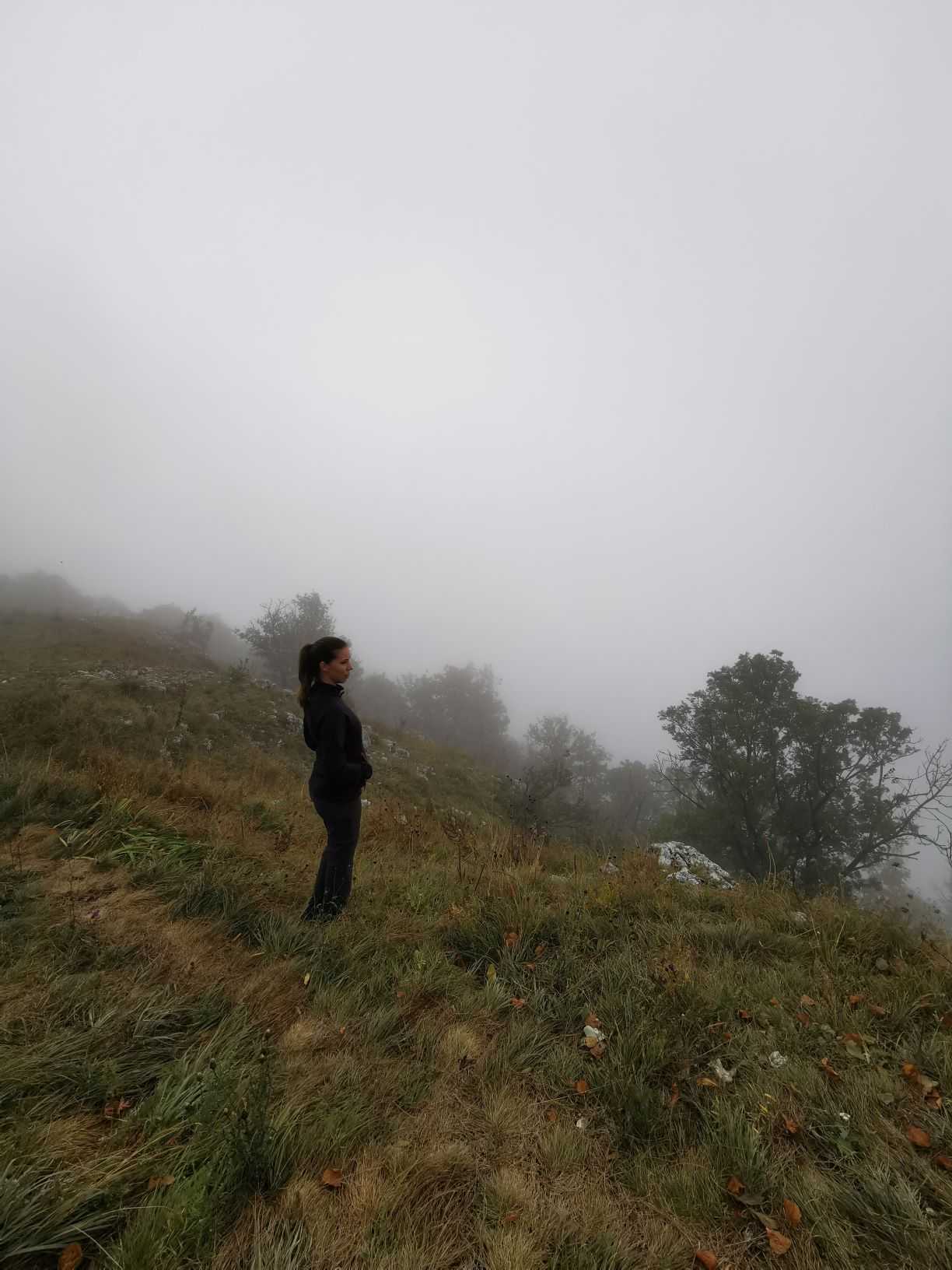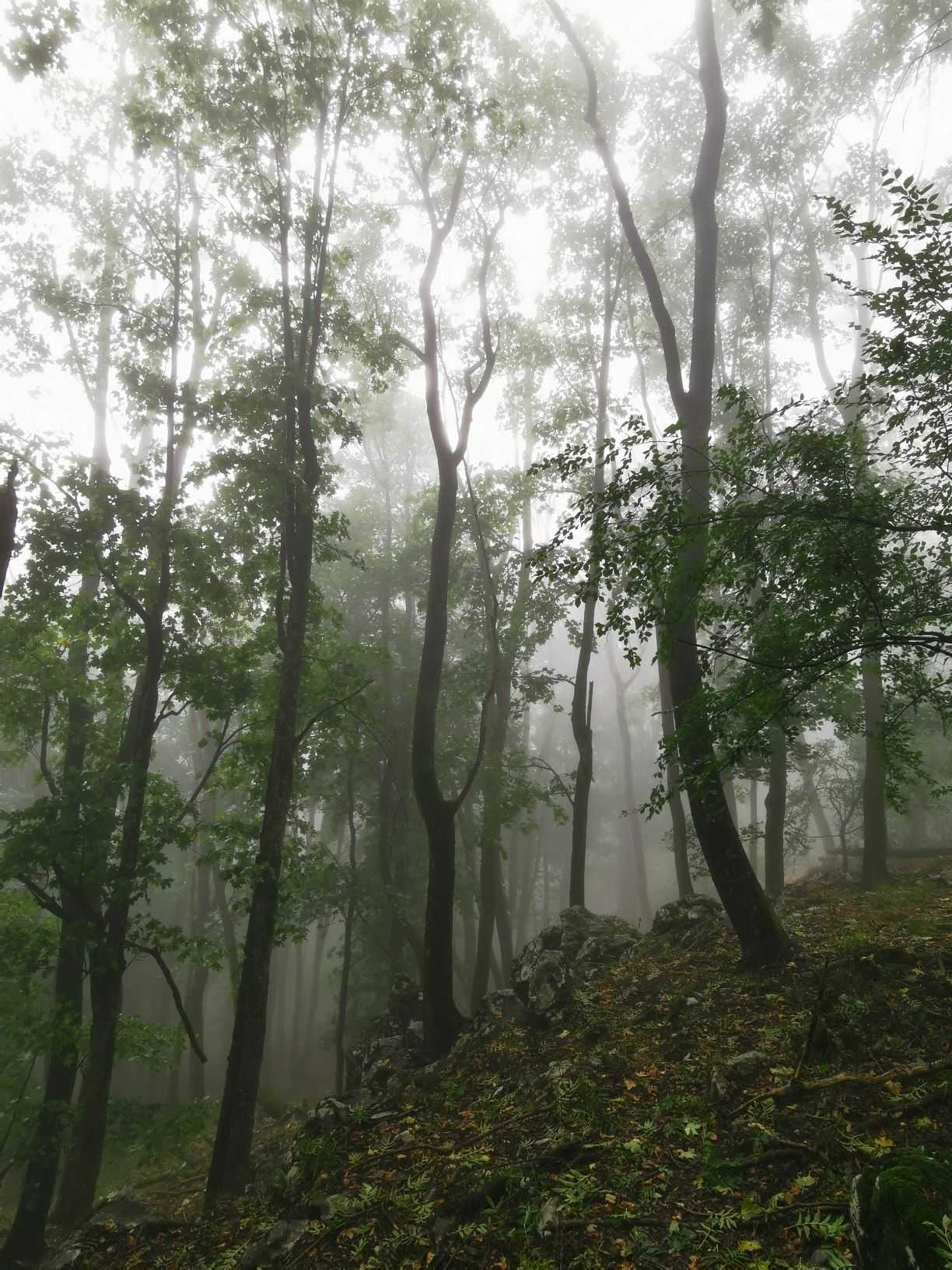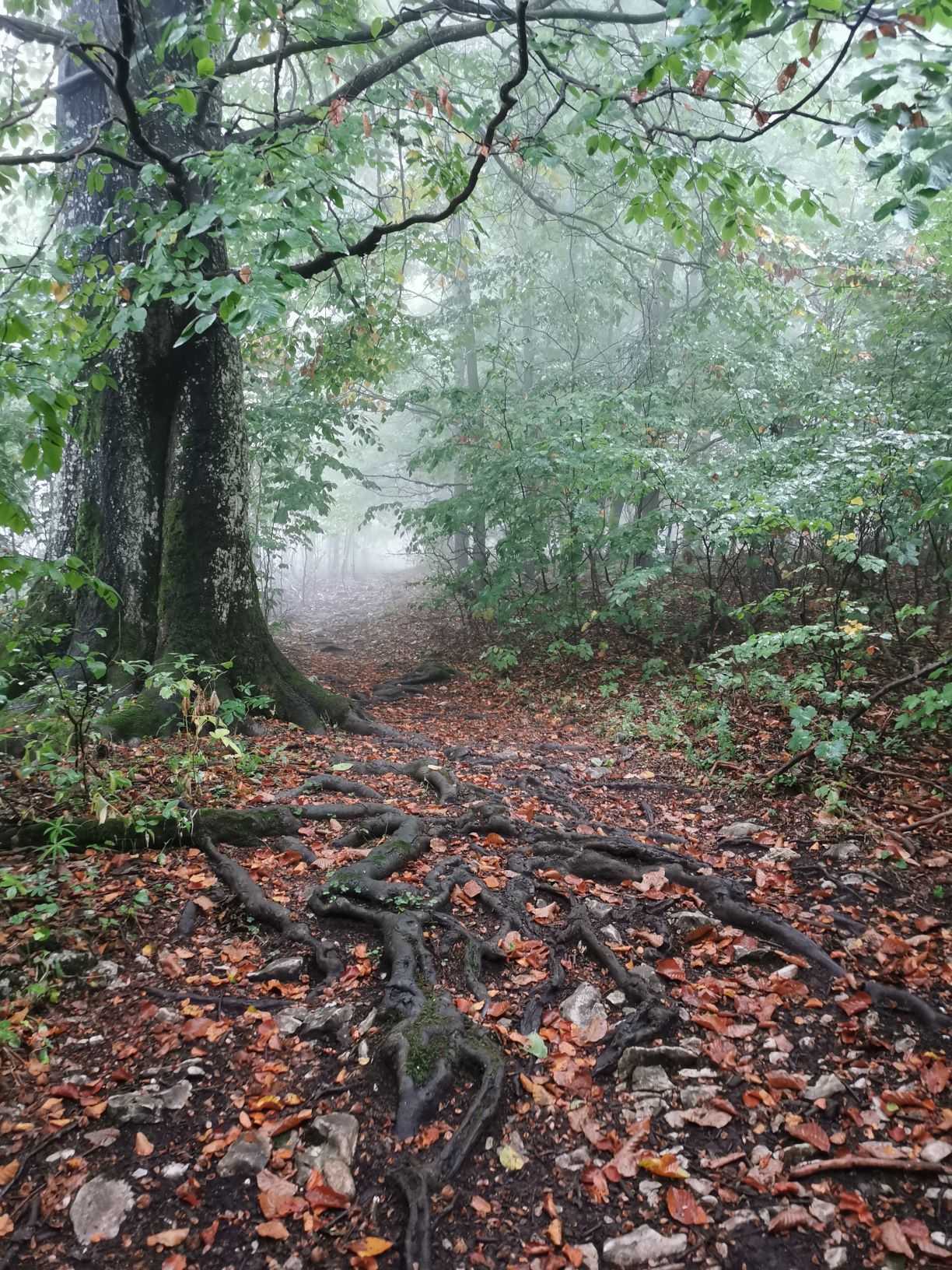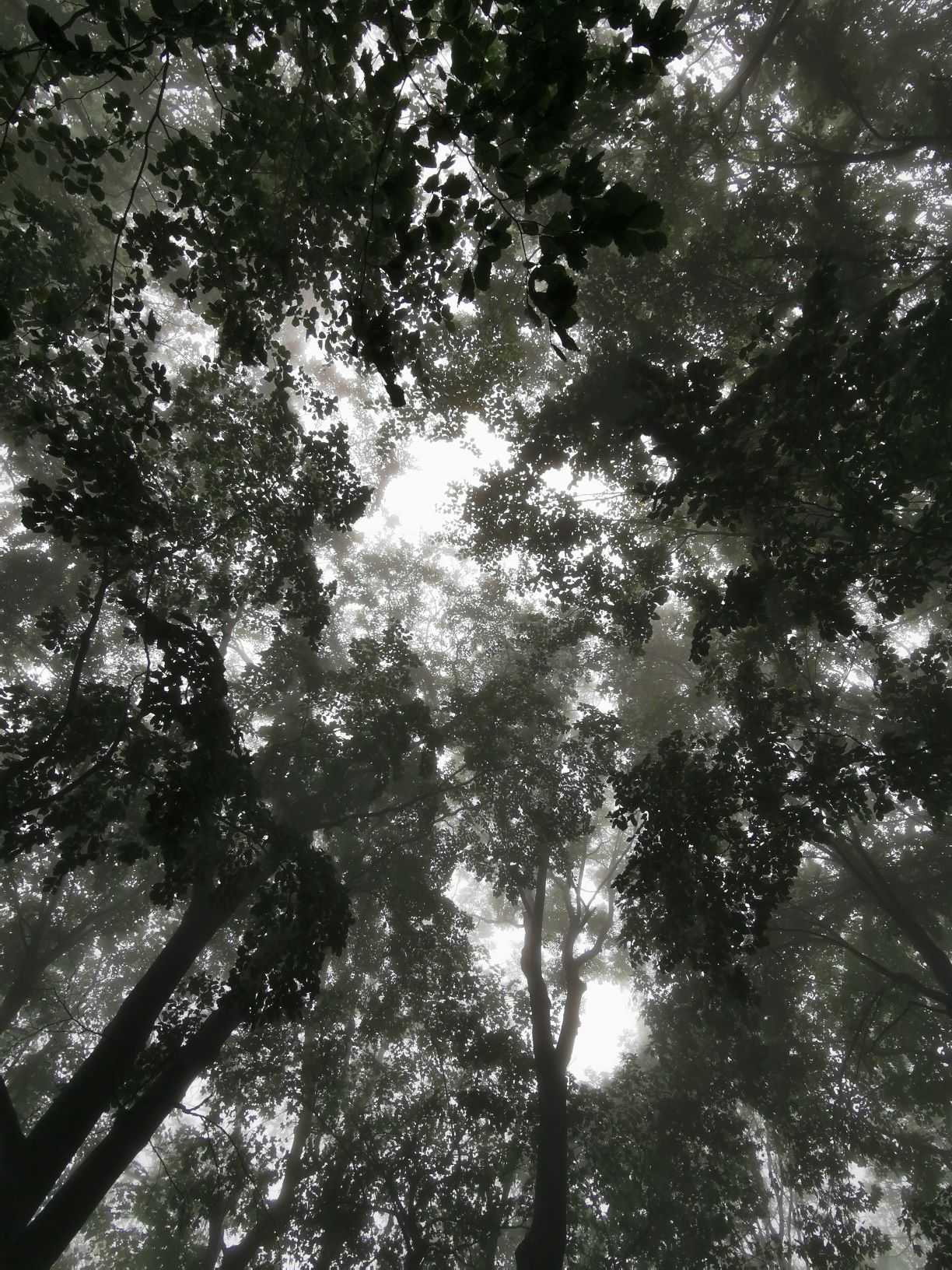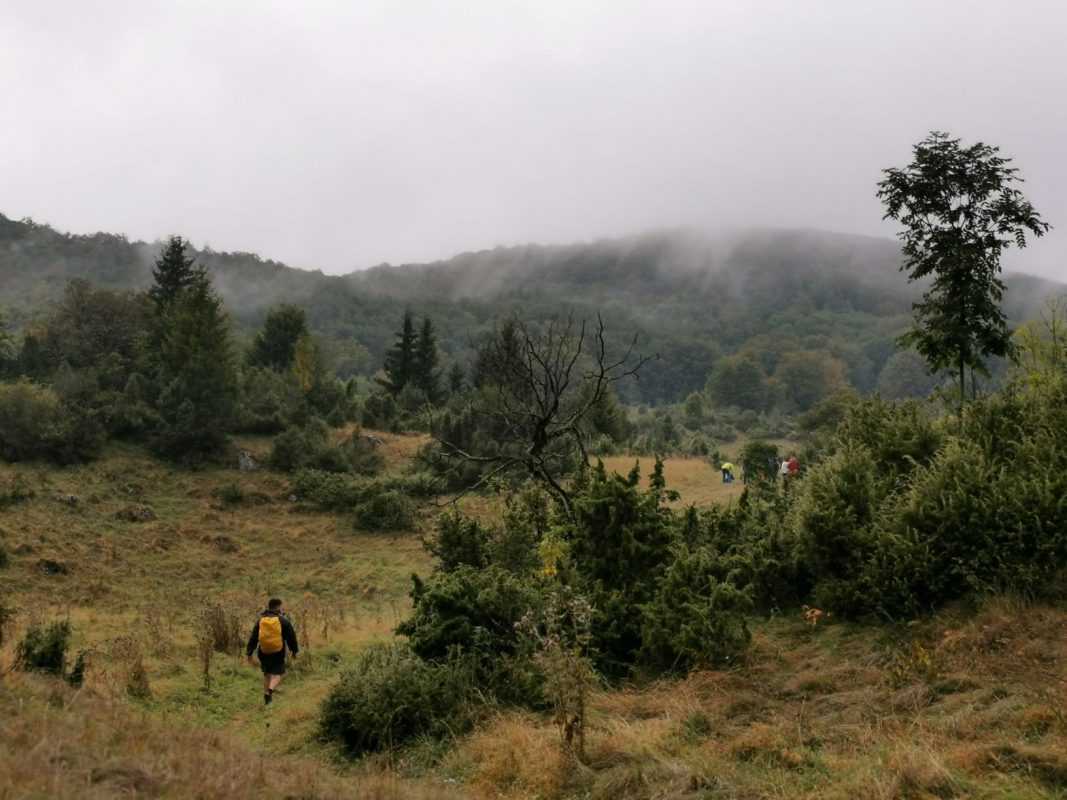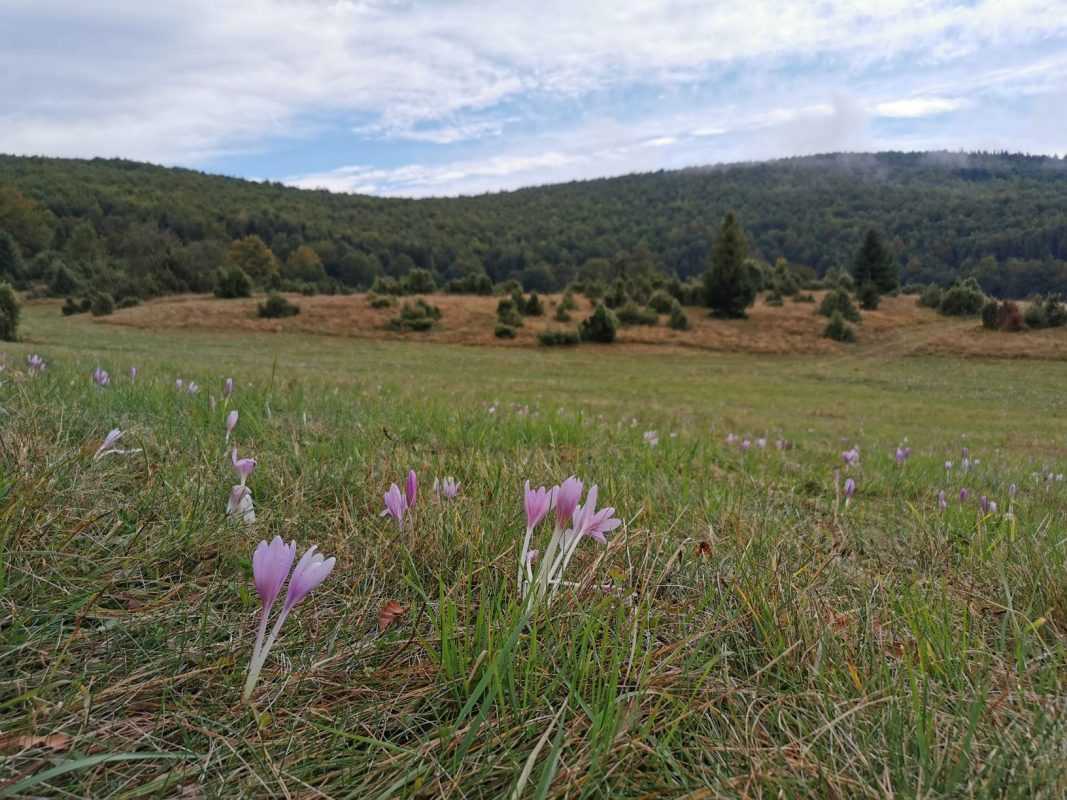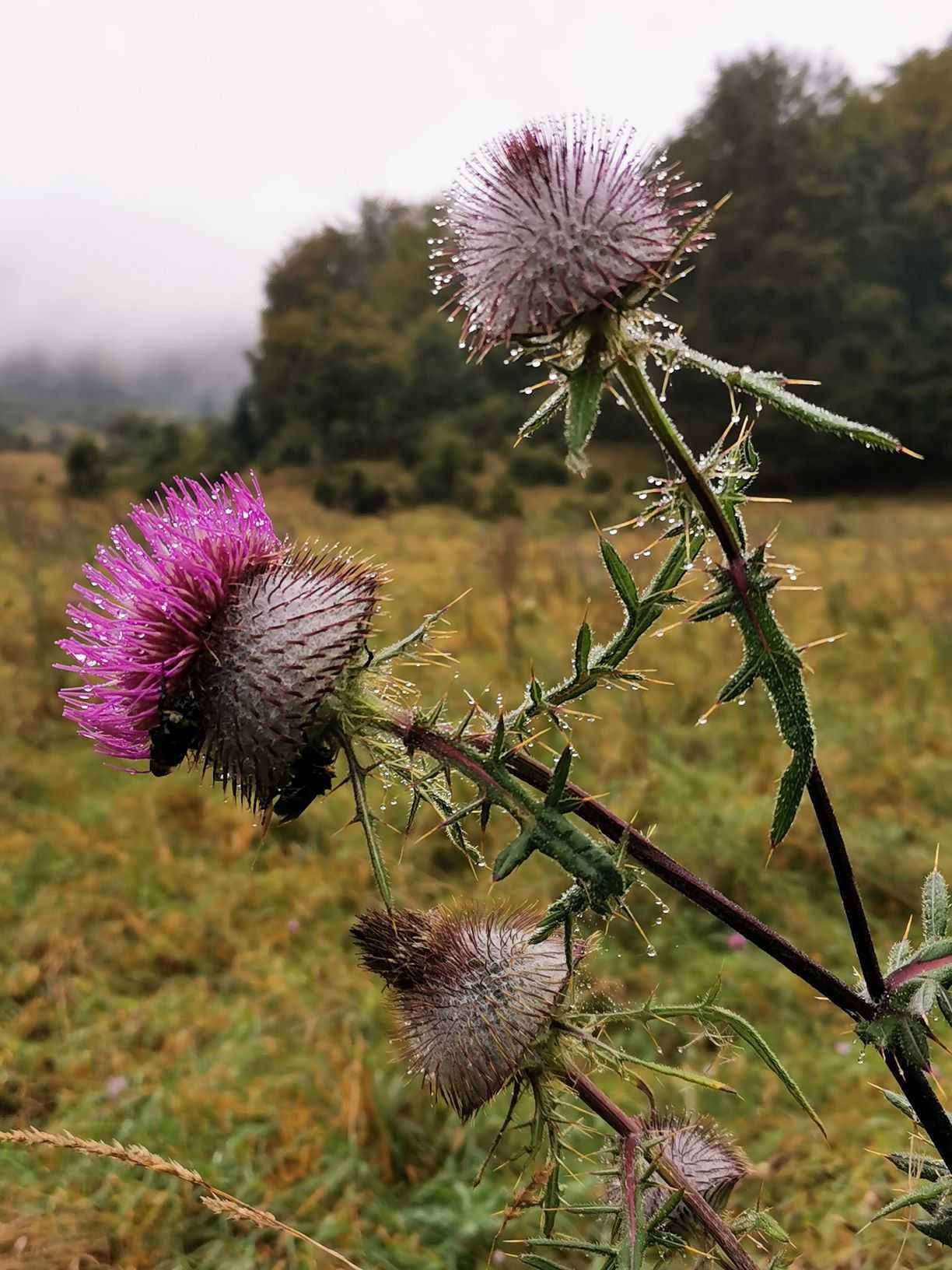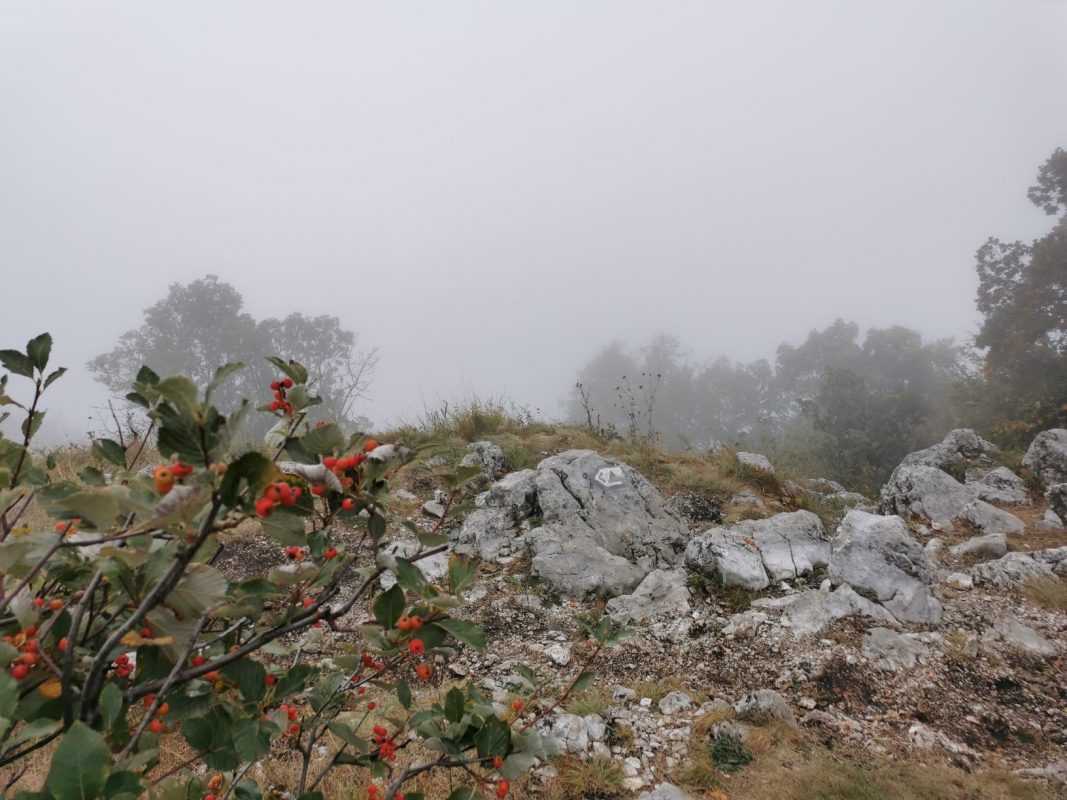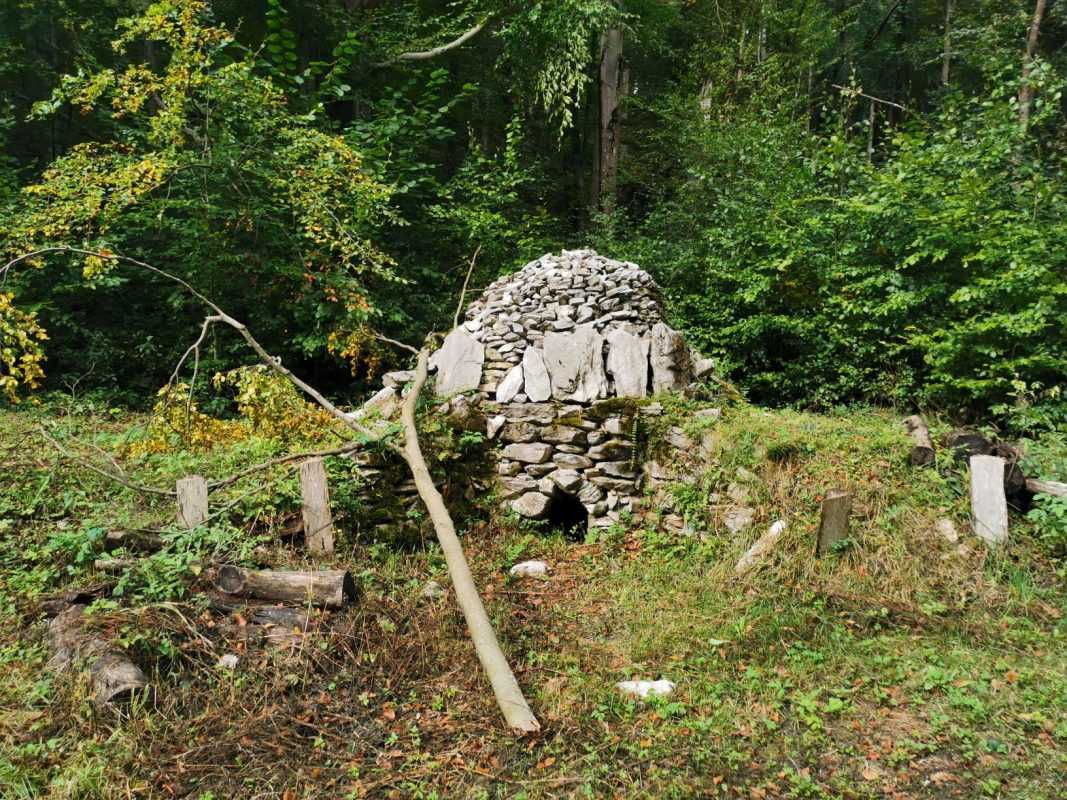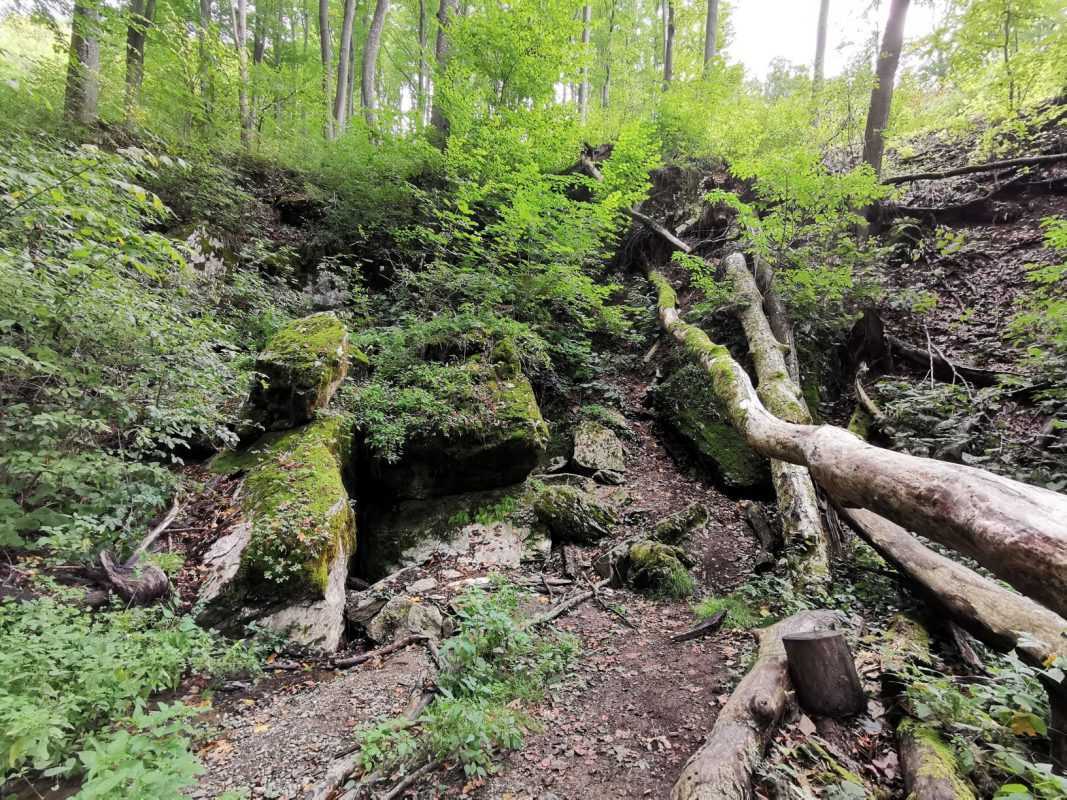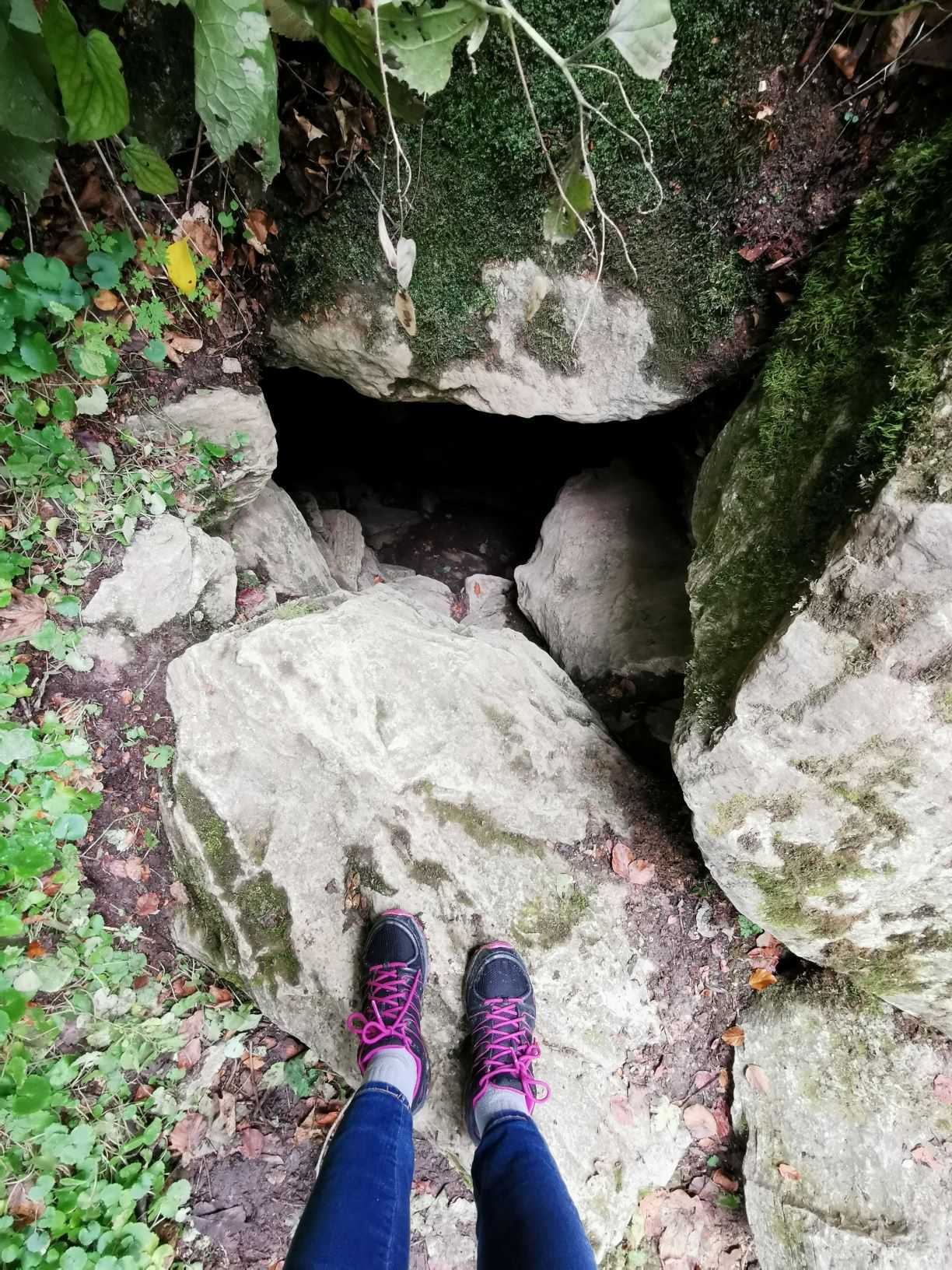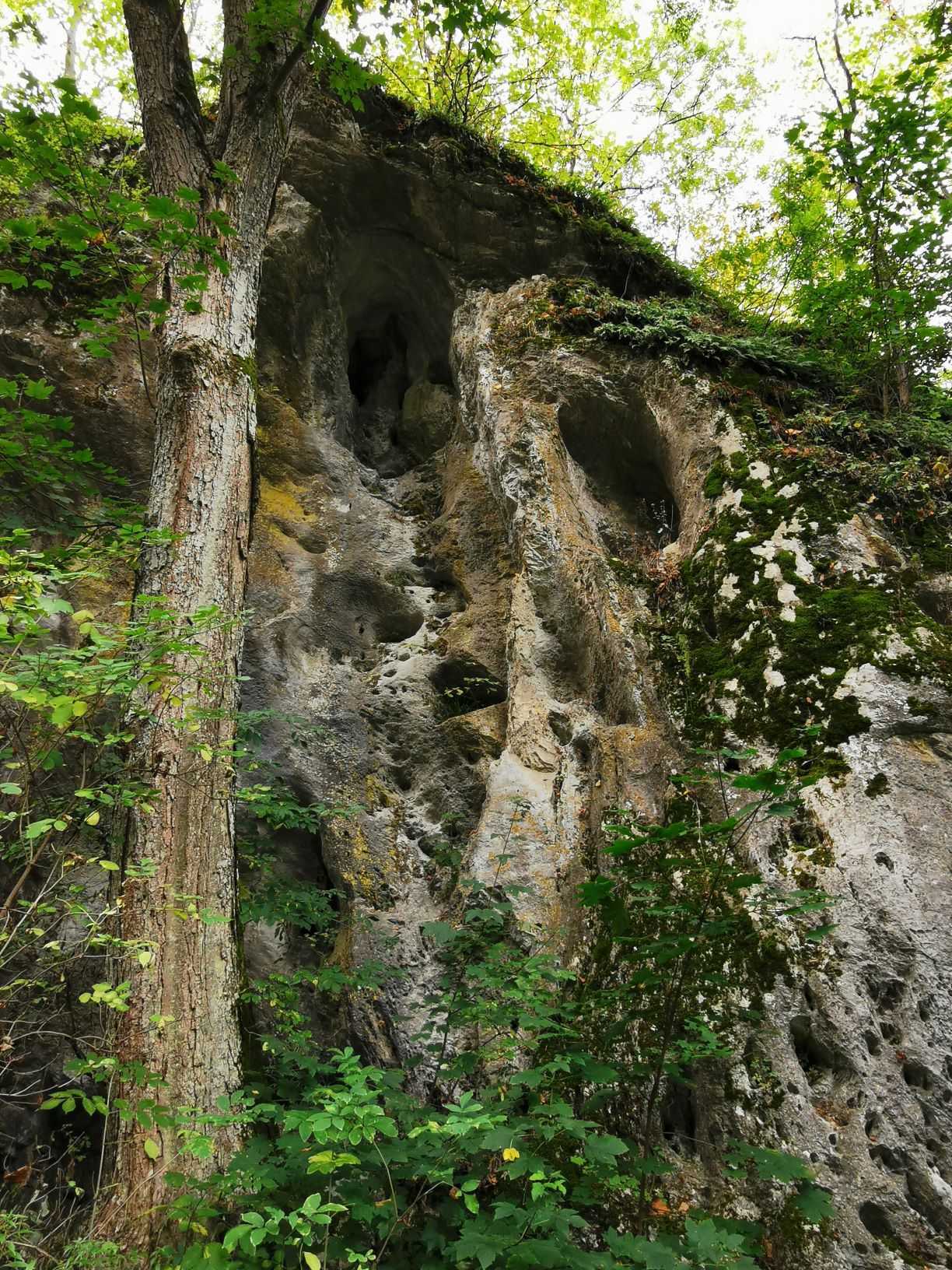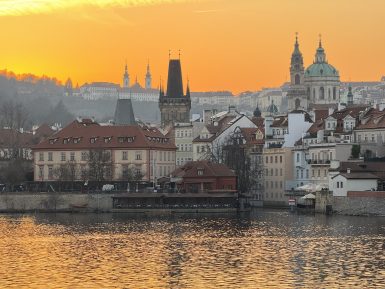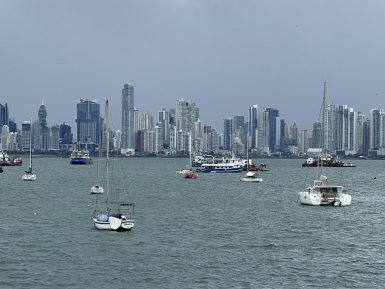Autumn is one of my favorite seasons of the year. Not only because nature shows how beautiful change can be in all shades of yellow and red, but also because walking in the forests is so soul-lifting. Bükk is one of my favorite domestic places for many reasons. On the one hand, I grew up in the area, and I still come home here. On the other hand, this is a mountain that has the most of most in our country. From the 100 highest Hungarian peaks, 59 are located in Bükk. The mountain hides more than 1,000 caves and water sources. There is 1,000 km of tourist trails here and hereby it’s Hungary’s most interconnected forest.
I discovered some new places thanks to Csámborgó tours that immediately stole into my heart. And although, contrary to the idea, there was no golden sun, no postcard-like autumn forest, but there was fog and grumpy instead. Our starting point was Répáshuta, one of the most isolated villages in Hungary. It is located halfway between Eger and Miskolc in the embrace of the Bükk and there is hardly any signal in many of its corners. If you want complete silence and relaxation, I recommend you to explore the following five sites near Répáshuta, which has just 600 inhabitants.
Tar-kő
From the parking lot of Répáshuta you can reach the highest natural observation point of the Bükk, the 949-metre-high Tar Stone, with a long, but more spectacular forest hike. Although this height is only sufficient for the eighth place in the ranking of the Bükk mountains, the Triassic limestone cliff is considered legendary. The steep cliff on the edge of the Bükk Plateau offers amazing views of the surrounding mountains and valleys – unless the fog stands in the way of the panorama.
On the top of the high cliff, sitting on the rocks you really feel like you’re above all else. Even if you stay here half an hour, you can forget all the troubles and sorrows of the world here. Whether it’s foggy or not. The Tar Stone, by the way, is a special habitat in the Bükk. In addition to the view. In the first half of the 20th century, species such as Campanula sibirica, Jávorka ceterach or three-colored love-in-idleness. So if you visit here, it’s worth looking around you if there’s a plant scarcity right at your feet.
Old beech and Zsidó Meadow
In many places, the hiking trail along the former lime burners is lined with old trees, which make you feel like you’re walking in an enchanted forest. The feeling is not accidental, because this part of the Bükk is protected. In the forest, referred to as the ancient beech or jungle, the trees are 180-200 years old and reach almost to the sky. Thanks to the fact that no forest farming activities have been carried out here for more than 100 years, the forest lives its own life. We crossed only the edge of the jungle, but the area must only be accessed strictly with special permission of Bükk National Park.
Zsidó or Jewish Meadow is considered a highly protected area of the national park and compared to the old beech forest, it can be visited without permission. The formation of Bükk meadows dates to the second half of the 18th century, when the fuel of industrialization (iron metallurgy, glassblowing) was provided by wood, and hereby by extraction of the area. Due to the subsequent grazing, mowing and specific microclimate of the plateau, the forest was not restored here. Mountain meadows provide excellent opportunities for wild camping or picnics in summer. While in autumn it is the view of naked ladies (they are flowers, not real ladies) and milk thistle flowers that attract the eye of hikers.
Három-kő
With half-hour walk from the Tar Stone you can reach the next character of the famous stones (Cserepes-kő, Pes-kő, Őr-kő, Bél-kő) the slightly lower Három-kő (904 m). It’s typical of the border stones of Bükk Plateau, that the outer slope reaches 4-600 meters. In foggy weather, these features could not be seen and neither the panorama, but it was still a great experience to be on top. When the weather is nice and clear, the cliff offers the widest view of the southern parts of Bükk. In addition to the Bél-kő, you can also see the peaks of Kékes, which I wrote about here in an earlier blog post.
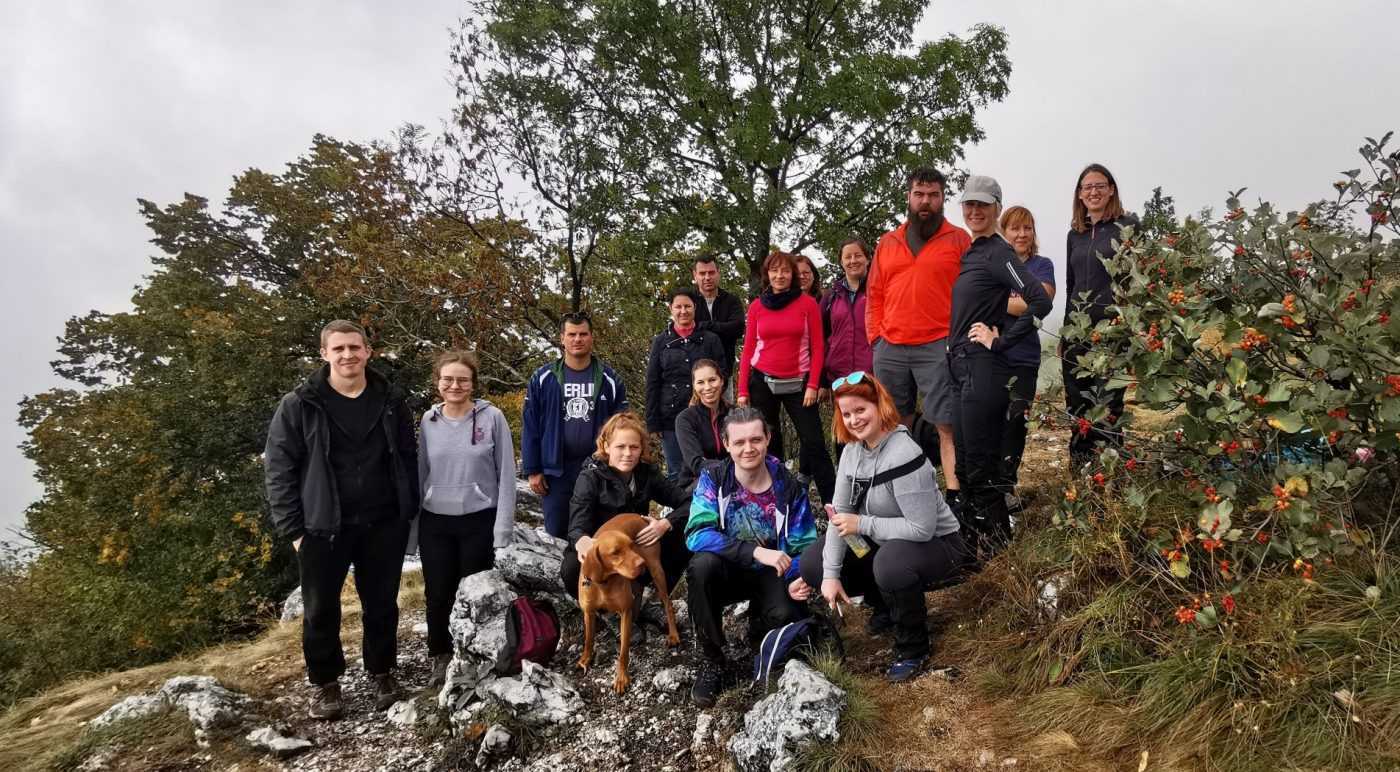
Sinkhole cave of Pénzpatak
The Tárnics trail starts from another parking lot of Répáshuta, which, with its length of 4 kilometers, can be completed faster and easier compared to the forest road described above. As a result of karst processes, Bükk hides many caves, sinkholes and more.
Among these, pay special attention to the sinkhole cave on the trail. The cavity at an altitude of 530 m was discovered in 1953 by László Jakucs, who studied the area around the Garadna Valley and the path of the water of Pénzpatak Rover. They found the cave based on a stream that disappeared into the cracks of limestone and then came out from underground and discovered Europe’s largest underground waterfall in it.
The cave, estimated at a depth of 150 meters, is Hungary deepest sinkhole and enjoys special protection. If you meet people in the woods with mud and rubber boots, let’s not be afraid of them. To this day, cavers often visit this sinkhole and go underground.
Balla Cave
Kőbalta trail leads through the settlement of Répáshuta and is named after one of the most important tools of the prehistoric ages, not coincidentally. The most extraordinary stop of the tour awaits the visitor on the hillside, where there is a steep way-up supported by railings.
One of the most significant archaeological findings of the Bükk, a skull of a 12,000-year-old child, was found by Jenő Hillerbrand during excavations in 1909. Although Istállós-kő Cave (I wrote about it here) is much better known than the Répáshuta version, due to its size and importance, the Balla Cave definitely deserves attention in the line of Hungarian caves.
At the end of the hike, take a ride in the village, get acquainted with the values of Répáshuta and eat a delicious Slovak (lake) meal at Vadász Inn. The menu is full of tasty and special local dishes, of which my personal favorites were Huta rich soup, wild stew with fried onion kvaka and tarkedli homemade apricot jam.


